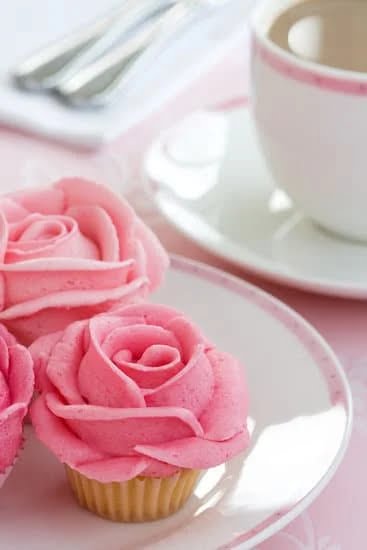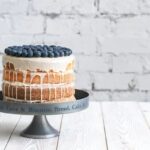Do you want to learn how to decorate a sponge cake like a pro? Decorating a sponge cake can be a fun and creative process, allowing you to showcase your culinary skills and impress your friends and family.
In this article, we will guide you through the essentials of decorating a delicious sponge cake, from choosing the right recipe to mastering various decoration techniques. Whether you’re a beginner or an experienced baker, our step-by-step instructions and tips will help you create stunning and mouthwatering sponge cake creations for any occasion.
When it comes to sponge cake decoration, it’s important to start with the basics. Choosing the right sponge cake recipe is crucial, as it will determine the texture and flavor of your cake. We will provide you with helpful tips on selecting the perfect recipe that suits your taste preferences and baking skills. Additionally, we will discuss the essential tools and ingredients needed for decorating a sponge cake, ensuring that you have everything you need to get started.
In this comprehensive guide, we will take you through each stage of decorating a sponge cake with detailed instructions and useful insights. From baking and cooling the sponge cake to crumb coating and frosting techniques, we will cover all the necessary steps to achieve a flawless finish.
Furthermore, we will explore creative decoration techniques such as piping, fondant application, edible flowers, and more, enabling you to elevate your sponge cake presentation to new heights. So let’s dive into the world of sponge cake decoration and uncover the secrets to creating beautiful and delectable masterpieces.
Choosing the Right Sponge Cake Recipe
When it comes to decorating a sponge cake, the first step is to choose the right recipe. The type of sponge cake you use will greatly influence how well it holds up to decoration and frosting. The key is to find a recipe that produces a light and airy sponge, while still being sturdy enough to support layers of frosting and decorations.
Classic Vanilla Sponge Cake
One of the most popular choices for decorating is a classic vanilla sponge cake. This type of sponge cake provides a neutral canvas for any type of decoration, from simple buttercream frosting to more elaborate fondant designs. With its delicate flavor, it can be easily paired with a wide range of fillings and frostings.
Chocolate Sponge Cake
For those who prefer something richer and more decadent, a chocolate sponge cake might be the perfect choice. The deep flavor of chocolate can add another dimension to your decorated cake, making it an ideal option for special occasions or when you want to create a show-stopping dessert.
Other Flavor Variations
There are also many other flavor variations to consider when choosing the right sponge cake recipe for decoration. From lemon and orange to red velvet and matcha, the options are endless. When selecting a recipe, consider the overall theme or flavor profile you want for your decorated sponge cake, as this will guide your choice in picking the right recipe.
By choosing the right sponge cake recipe, you set the stage for successful decoration. Whether you opt for classic vanilla, chocolate, or another flavor variation, ensuring that your sponge cake has the right texture and taste is essential in creating a stunning decorated masterpiece.
Essential Tools and Ingredients for Decorating a Sponge Cake
When it comes to decorating a sponge cake, having the right tools and ingredients is essential to achieve a beautiful and professional-looking result. There are a few key items that every baker should have on hand before they start the decoration process.
First and foremost, you will need a good quality turntable or rotating cake stand. This will make it much easier to frost and decorate the cake evenly from all angles. Additionally, an offset spatula is crucial for smoothing out the frosting and creating clean lines on the cake’s surface.
In terms of ingredients, a high-quality sponge cake recipe is of utmost importance. The texture and crumb of the cake will greatly affect how well it holds up to decoration. It’s also crucial to have fresh, high-quality butter, powdered sugar, and any other ingredients needed for your chosen frosting or filling.
Another essential tool for decorating a sponge cake is a pastry bag and piping tips. These will allow you to create intricate designs and textures on the surface of the cake, such as rosettes, swirls, or written messages. Additionally, having a set of fondant shaping tools can be useful if you plan to work with fondant for your decorations.
As you gather your tools and ingredients for decorating a sponge cake, remember that quality matters. Investing in good equipment and using fresh, high-quality ingredients will make all the difference in achieving professional-looking results.
Step-by-Step Guide to Baking and Cooling the Sponge Cake
Baking and cooling a sponge cake is a crucial part of the cake decoration process. The right technique can make or break the final presentation of your sponge cake. Here’s a step-by-step guide to help you achieve a perfectly baked and cooled sponge cake for decorating.
First, it’s essential to choose the right sponge cake recipe. Whether you prefer a classic vanilla sponge or something more indulgent like chocolate or red velvet, make sure to follow the recipe closely and use high-quality ingredients for the best results.
Once you have your batter ready, preheat your oven to the specified temperature in the recipe. Prepare your baking pans by greasing and flouring them to prevent sticking. Pour the batter into the pans evenly, smoothing out the top with a spatula to ensure an even rise.
Place the pans in the center of the oven and bake according to the recipe’s instructions. Avoid opening the oven door during baking to prevent sinkage. After baking, test for doneness with a toothpick inserted into the center – it should come out clean or with just a few moist crumbs attached.
After removing from the oven, allow the cakes to cool in their pans on a wire rack for 10-15 minutes before carefully removing them from the pans to cool completely. Once cooled, you can start decorating your sponge cake using various techniques such as crumb coating, frosting, piping, fondant decoration, or edible flowers.
| Baking and Cooling Steps | Details |
|---|---|
| Choose the Right Recipe | Follow recipe closely and use high-quality ingredients |
| Baking Process | Preheat oven, prepare pans, bake according to instructions |
| Cooling Process | Cool cakes in pans on wire racks before removing them |
Tips for Crumb Coating and Frosting the Sponge Cake
To achieve a beautifully decorated sponge cake, it is crucial to master the art of crumb coating and frosting. These two steps can make or break the appearance and taste of your cake, so it’s essential to pay close attention to them. Here are some tips to help you perfect the crumb coating and frosting process for your sponge cake:
- Prepare the Cake: Before you begin crumb coating and frosting the sponge cake, make sure it is completely cooled. Warm cakes can cause the frosting to melt and become runny, resulting in a messy finish.
- Crumb Coat First: Crumb coating is a thin layer of frosting that seals in the crumbs, creating a smooth base for the final coat of frosting. Use a small offset spatula to apply a thin layer of frosting all over the cake, then chill it in the refrigerator for about 15 minutes before applying the final coat.
- Use an Offset Spatula: A small offset spatula is an essential tool for crumb coating and frosting a sponge cake. Its angled blade allows for precision and control when spreading the frosting, ensuring an even and smooth finish.
Once you have successfully crumb coated your sponge cake, it’s time to move on to the final step – frosting. Here are some helpful tips for achieving a flawless frosted finish:
- Apply an Even Layer: Start by adding a generous amount of frosting on top of the cake, then use your offset spatula to spread it outwards towards the edges. Work in smooth, even strokes to create a seamless finish.
- Smooth Out Imperfections: If there are any air bubbles or uneven spots in the frosting, use a bench scraper or straight edge spatula to gently smooth them out. Continue until you achieve a perfectly frosted surface.
- Add Texture or Design: Depending on your desired decoration style, you can leave the frosted cake as is for a classic look, or get creative with textured designs using different tools such as combs or piping tips.
Mastering crumb coating and frosting techniques will elevate your sponge cake decoration skills and result in professional-looking desserts that are sure to impress any crowd.
Incorporating these guidelines into your baking routine will enhance how to decorate a sponge cake.
Creative Decoration Techniques for Sponge Cake (Including Piping, Fondant, Edible Flowers, Etc)
When it comes to decorating a sponge cake, there are numerous creative techniques that can take your cake from ordinary to extraordinary. Whether you’re looking to impress guests at a special occasion or simply want to experiment with different decorating styles, the possibilities are endless. From piping delicate designs with buttercream to using fondant for more intricate decorations, there are several techniques you can try to elevate the appearance of your sponge cake.
Piping
One of the most popular and versatile decoration techniques for sponge cakes is piping. Using a piping bag and various tips, you can create beautiful swirls, rosettes, stars, and other decorative patterns with buttercream or royal icing. Piping allows for precision and creativity, making it perfect for adding a personal touch to your cake.
Fondant
Fondant is a pliable icing that can be rolled out and draped over the sponge cake to create a smooth, flawless finish. It also provides an opportunity for more intricate decorations such as 3D figurines, flowers, and patterns. Fondant allows for endless creativity and customization, making it a favorite choice for professional bakers and home decorators alike.
Edible Flowers
Adding edible flowers as decorations is a simple yet effective way to enhance the visual appeal of your sponge cake. Edible blooms such as roses, violets, pansies, and lavender can be used to create stunning floral arrangements on top of the cake. Not only do they add color and elegance but also provide a delightful natural fragrance.
Experimenting with these creative decoration techniques opens up a world of possibilities for making your sponge cake look visually stunning. Whether you opt for elegantly piped designs or elaborate fondant creations, incorporating these techniques will take your cake decorating skills to the next level.
Troubleshooting Common Decoration Issues
Decorating a sponge cake can be a fun and creative process, but it’s not always smooth sailing. There are several common issues that can arise when decorating a sponge cake, but with the right tips and tricks, you can easily troubleshoot these problems.
One common issue when decorating a sponge cake is that the frosting or icing may start to slide off the sides of the cake. This can happen if the cake has not been properly cooled before frosting, or if the frosting is too thin.
To prevent this from happening, make sure to allow your sponge cake to cool completely before attempting to frost it. Additionally, you can try chilling the frosted cake in the refrigerator for a little while to help set the frosting in place.
Another common problem that decorators encounter is air bubbles in their frosting or icing. These air bubbles can create a bumpy and uneven surface on the cake, which is not ideal for decorating. To avoid this issue, try using a spatula or offset spatula to gently spread and smooth out the frosting on your sponge cake. You can also lightly tap the sides of the cake to help release any trapped air bubbles.
Lastly, some decorators may struggle with achieving clean and sharp edges when frosting their sponge cakes. If you find that your edges are looking messy or jagged, try using a bench scraper or an icing smoother to neatly shape and smooth out the sides of your cake. Taking your time and using steady, even pressure will help you achieve professional-looking edges on your decorated sponge cake.
By being aware of these common decoration issues and implementing these troubleshooting tips, you can confidently decorate a beautiful and flawless sponge cake for any occasion.
Presentation and Serving Ideas for a Beautifully Decorated Sponge Cake
Once you have successfully decorated your sponge cake, it’s time to think about how you want to present and serve it. The way you present your cake can make a big difference in how it is received by your guests. Here are some ideas for presenting and serving your beautifully decorated sponge cake:
1. Cake Stand: Invest in a beautiful cake stand that will showcase your decorated sponge cake. Whether it’s a simple glass stand or an ornate metal one, a cake stand can elevate the presentation of your cake.
2. Garnishes: Add some extra flair to your sponge cake by garnishing it with fresh fruits, chocolate shavings, or edible flowers. Not only do these garnishes add visual appeal, but they can also add different flavors and textures to the overall dessert.
3. Individual Servings: If you want to create a more unique presentation, consider slicing the sponge cake into individual servings and plating them individually. This is perfect for dinner parties or events where you want to impress your guests with personalized servings.
4. Accompaniments: Consider serving your decorated sponge cake with accompaniments such as whipped cream, ice cream, or fruit compote. These additions can complement the flavors of the sponge cake and enhance the overall dessert experience.
By considering these presentation and serving ideas, you can take your beautifully decorated sponge cake to the next level and create a memorable dessert experience that will impress your guests.
Conclusion
In conclusion, decorating a sponge cake can be a fun and rewarding experience, allowing you to showcase your creativity and baking skills. By following the right recipe, using the essential tools and ingredients, and mastering the step-by-step process of baking, cooling, crumb coating, and frosting the cake, you can achieve professional-looking results. Additionally, learning creative decoration techniques such as piping, fondant work, or using edible flowers will take your sponge cake to the next level.
While decorating a sponge cake may seem daunting at first, with practice and patience, you can overcome common decoration issues and create a stunning final product. Whether you’re making a sponge cake for a special occasion or simply to treat yourself and loved ones, presentation and serving are also important aspects to consider. Taking the time to present your decorated sponge cake beautifully will enhance the overall experience for those who get to enjoy it.
Frequently Asked Questions
Can Sponge Cake Be Decorated?
Yes, sponge cake can definitely be decorated. This type of cake is versatile and can be adorned with various toppings, frostings, fruits, and other decorative elements to enhance its visual appeal.
How Do You Spruce Up a Sponge Cake?
To spruce up a sponge cake, you can consider adding a layer of flavored whipped cream or frosting between the cake layers. You can also top the cake with fresh fruit, chocolate shavings, edible flowers, or a dusting of powdered sugar for an elegant touch.
What Are Three Ways the Victoria Sponge Cake Could Be Decorated?
Three ways to decorate a Victoria sponge cake could be by dusting the top with powdered sugar for a simple and classic look. Another option is to spread a layer of raspberry jam on one half and whipped cream on the other half, then sandwich them together and finish with a sprinkling of powdered sugar.
Lastly, you could add fresh strawberries or raspberries on top for a colorful and flavorful decoration.

Welcome to our cake decorating blog! My name is Destiny Flores, and I am the proud owner of a cake decorating business named Cake Karma. Our mission is to provide delicious, beautiful cakes for all occasions. We specialize in creating custom cakes that are tailored specifically to each customer’s individual needs and tastes.





